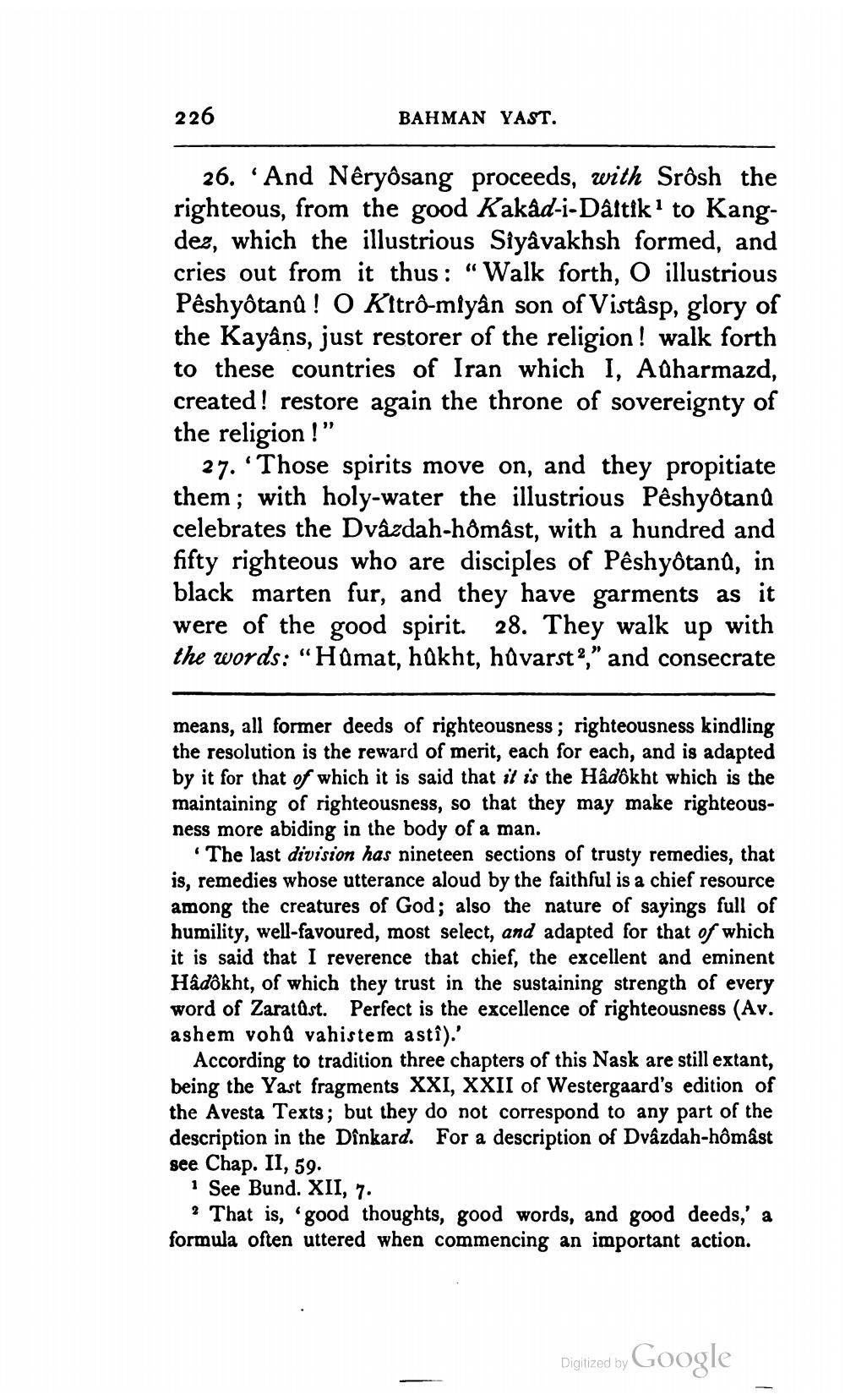________________
226
BAHMAN YAST.
26. 'And Nêryôsang proceeds, with Srôsh the righteous, from the good Kakâd-i-Dáttik? to Kangdez, which the illustrious Siyâvakhsh formed, and cries out from it thus: “Walk forth, O illustrious Pêshyôtana ! O Kitrô-miyan son of Vistâsp, glory of the Kayâns, just restorer of the religion! walk forth to these countries of Iran which I, Adharmazd, created! restore again the throne of sovereignty of the religion !"
27. 'Those spirits move on, and they propitiate them; with holy-water the illustrious Pêshyôtana celebrates the Dvâzdah-hômâst, with a hundred and fifty righteous who are disciples of Pêshyôtand, in black marten fur, and they have garments as it were of the good spirit. 28. They walk up with the words: “Hamat, hukht, hævarst?," and consecrate
means, all former deeds of righteousness; righteousness kindling the resolution is the reward of merit, each for each, and is adapted by it for that of which it is said that it is the Hâdôkht which is the maintaining of righteousness, so that they may make righteousness more abiding in the body of a man.
The last division has nineteen sections of trusty remedies, that is, remedies whose utterance aloud by the faithful is a chief resource among the creatures of God; also the nature of sayings full of humility, well-favoured, most select, and adapted for that of which it is said that I reverence that chief, the excellent and eminent Hâdôkht, of which they trust in the sustaining strength of every word of Zaratūst. Perfect is the excellence of righteousness (Av. ashem voh vahistem astî).'
According to tradition three chapters of this Nask are still extant, being the Yast fragments XXI, XXII of Westergaard's edition of the Avesta Texts; but they do not correspond to any part of the description in the Dinkard. For a description of Dvâzdah-hômâst see Chap. II, 59.
1 See Bund. XII, 7.
? That is, 'good thoughts, good words, and good deeds,' a formula often uttered when commencing an important action.
Digitized by
Digitized by Google




